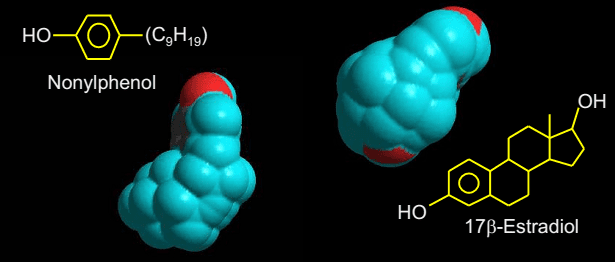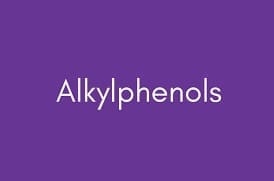The Troubling Bubble
By: Dr. Ruma Chakrabarti
Alkylphenol ethoxylates (APEO) are non-ionic surfactants, which are widely used as wetting agents, emulsifiers, and dispersants in paints and coating, residential and commercial cleaning products, in pesticide formulations, and in textile and paper processing.
The most important APEO for the textile/clothing industry are Nonyl Phenol Ethoxylates(NPEO) and Octyl Phenol Ethoxylates, which contribute to 80 and 20% respectively of the total worldwide APEO production.
APEO Threat/ Concerns:
APEOS have been the subject of much discussion and controversies from almost the past three decades. The concerns pertain to the following three areas:
- Their life cycle assessment indicates long term continued environmental contamination. APEOs degrade slowly and have a tendency to bio-accumulate.
- They are toxic to aquatic organisms and an endocrine disruptor in higher animals, and hence pose a risk to the human population.
- They are present particularly everywhere. They are in spot cleaners, dust in our homes, in human blood, urine, in breast milk, in canned food, paints, couches …. Etc.
APEOs after use is discharged into the aquatic environment and degrades into Alkyl phenols which have been identified as an EDC(Endocrine disrupting chemicals).
Endocrine disruptors are chemicals that interfere in some way with hormone action and in so doing can alter endocrine function such that it leads to adverse effects on human and wildlife health.
The diverse systems affected by EDCs likely include all hormonal systems and range from those controlling the development and function of reproductive organs to the tissues and organs regulating metabolism and satiety. Effects on these systems can lead to obesity, infertility or reduced fertility, learning and memory difficulties, diabetes or cardiovascular disease, as well as a variety of other diseases

Figure 1: Effect of APEO on Aquatic Environment

Figure 2: Structure of Nonylphenol and 17 β -Estradiol
The metabolites of APEO, are able to mimic hormones and also are persistent in the environment.
4-para-nonylphenol (a metabolite of NPEO) with a branched alkyl chain, strongly resembles the natural hormone 17-β – Estradiol and is capable of mimicking this hormone in vitro and in vivo. The low specificity of the oestrogen receptor allows hormone-mimicking substances, like NP, to enter and place itself in the receptor, provoking a response in the endocrine system.
17-β -Estradiol is a hormone important in reproduction and hence interference from resembling substances can have serious consequences on entire populations of organisms, causing problems such as feminisation of the male fractions.
A study conducted in the US has found that about 85 percent of male smallmouth bass collected in national wildlife refuges in the Northeastern U.S. had eggs were growing in their testes. Pollutants that mimic sex hormones are the suspected culprit.
Regulations Concerning APEOs: In Europe the use of NPEO has been banned or voluntarily restricted since 1986. Germany has forbidden t he use of A PEO in detergents since 1998. The NP / NPEO requirements of the European Regulation (EC) No. 1907/2006 of REACH, Annex XVII , requires that , such products shall not be placed on the market or used as a substance or constituent of preparations in concentrations equal or higher than 0.1% by mass.
Textile eco-labels as the EU flower and Oeko-Tex 100 have also forbidden the use of APEO in the production of certified products.
.APEO is one of the 11 priority chemicals that has been listed to be phased out by ZDHC in their roadmap ZDHC 2020.
Renewed interest in APEO came into being, when Green peace international publicly declared their investigation report, where they found a broad range of hazardous chemicals in children’s clothing and footwear produced by eight luxury fashion brands. This body of evidence formed the framework for Greenpeace “DETOX ” campaign, which challenged global sportswear and fashion brands to eliminate all hazardous chemicals from their supply chain and products. This challenge was taken up by the brands and hundreds and thousands of people across the globe and they made individual commitments to ZDHC(Zero Discharge of Hazardous Chemicals) by 2020.
In a nutshell:
- APEO is released mainly through effluent discharge.
- Degrade by the loss of ethoxy compounds into non degradable compounds
- Degraded products are EDC (Endocrine Disrupting Compounds)
- They mimic hormones and cause hormonal disturbance in aquatic animals.
- Their usage is banned both under gOTS and OEKO Tex

